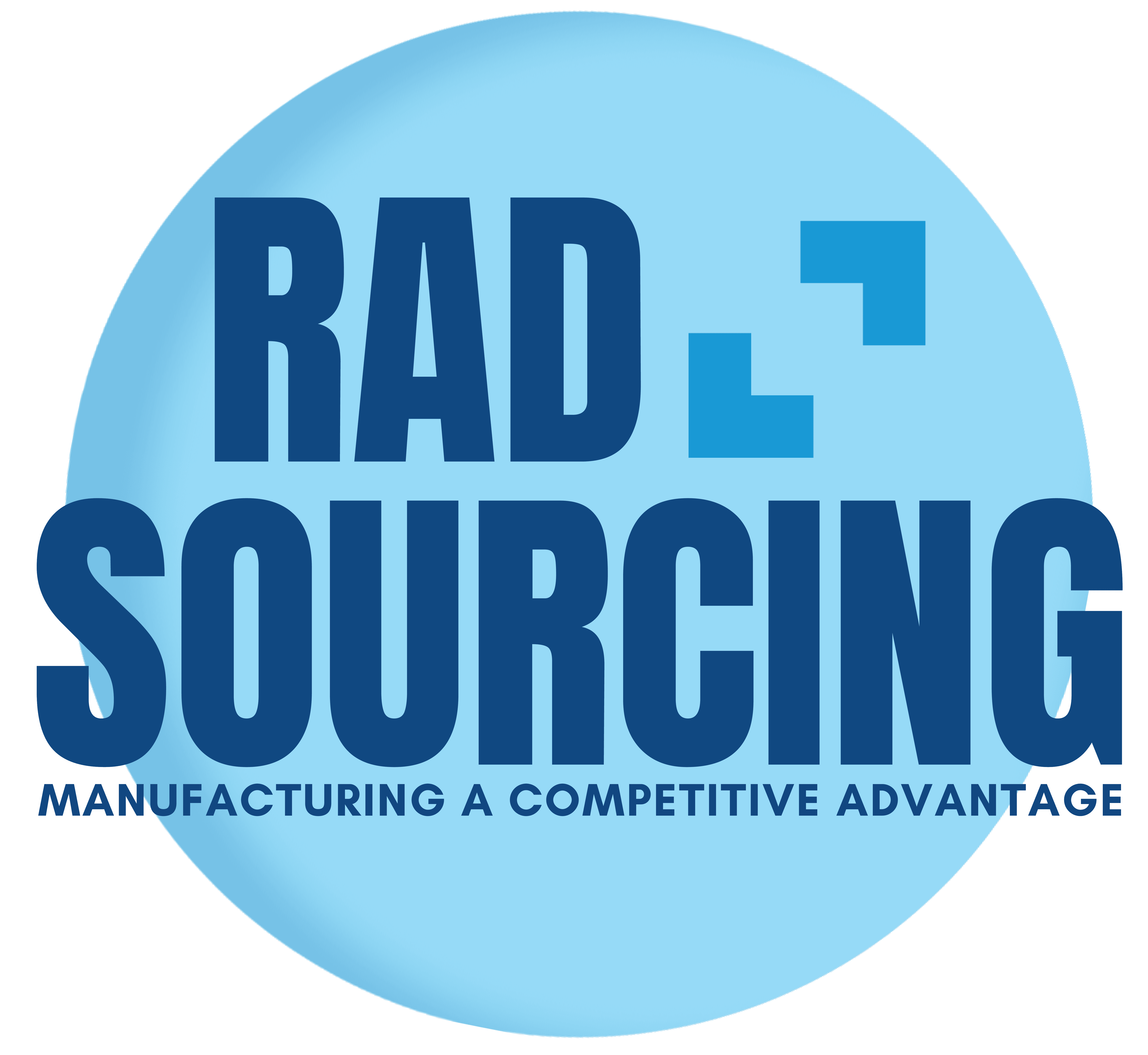Ensuring consistent quality in apparel manufacturing is one of the biggest challenges brands face. A single defect in bulk production can lead to returns, lost revenue, and damage to your brand’s reputation. That’s why a strong Quality Assurance (QA) process—both at the factory level and with your sourcing agent—is essential.
At Rad Sourcing, we’ve managed thousands of apparel production runs and have seen firsthand how proactive QA measures prevent costly mistakes. In this guide, we’ll cover exactly what your factory and sourcing agent should be doing before your products ship—and how you can hold them accountable.

Why Quality Assurance Matters
A proper QA process is more than just checking finished products before they ship. It’s about preventing defects before they happen and ensuring consistency throughout the entire manufacturing process.
What Happens Without QA?
❌ High defect rates – Poor stitching, incorrect sizing, or fabric flaws.
❌ Customer complaints & returns – Leading to bad reviews & lost sales.
❌ Production delays – Fixing issues late in production costs time & money.
❌ Reputation damage – Low-quality products can hurt long-term brand growth.
💡 Rad Sourcing Tip: Don’t wait until production is finished to conduct quality checks. Inspections should happen at multiple stages to catch issues early.
: A brand producing 5,000 sweatshirts skipped in-line inspections and only checked after production. 40% had loose stitching issues, requiring rework that delayed their launch by 3 weeks.
What Your Factory & Sourcing Agent Should Do for QA
Quality control is a shared responsibility between your factory and sourcing agent. Here’s what they should be doing at each stage of production.
1. Pre-Production Quality Checks
Before production starts, the factory and sourcing agent must confirm:
✅ Fabric & Material Inspection
- Test for shrinkage, colorfastness, and defects.
- Confirm weight, texture, and durability meet requirements.
✅ Lab Testing for Compliance (If needed)
- Check for harmful chemicals (e.g., AZO dyes, lead, phthalates).
- Ensure materials meet country-specific safety regulations.
✅ Size & Fit Sample Approval
- Factory should create pre-production (PP) samples that are tested for fit, stitching, and logo placement.
- Sourcing agent should compare samples to the approved tech pack.

2. In-Line Inspections During Production
Inspection shouldn’t wait until the end of production. Mid-production checks prevent large-scale defects before they happen.
✅ Random Spot Checks (During Cutting & Sewing)
- Ensure correct stitching, label placement, and panel alignment.
- Check if production matches approved sample specs.
✅ Defect Rate Monitoring
- If defect rates exceed 2-5%, production should be paused to fix issues.
- Sourcing agent should communicate with the factory on corrective actions.
✅ Color & Print Consistency
- If using dyeing or printing, samples should be checked for shade variations.
- Common issue: Batch-to-batch color differences—this should be caught early.
A client producing activewear noticed print misalignment in mid-production, allowing the factory to adjust before 3,000 units were finished, saving thousands in rework costs.

3. Final Pre-Shipment Inspection (Before Packing & Shipping)
Before the factory packs and ships the order, your sourcing agent should conduct a full inspection using the AQL (Acceptable Quality Level) standard.
✅ Random Sample Testing
- Check 10-20% of the bulk order for defects (stitching, sizing, print clarity).
- Verify correct labeling, tags, and packaging specs.
✅ Functionality & Durability Testing
- Test zippers, buttons, stretch recovery, and seam strength.
- For waterproof or outdoor gear, confirm moisture resistance.
✅ Final Compliance Review
- Ensure production meets export regulations (e.g., flammability for children’s wear).
- Check polybag suffocation warnings, country of origin labels, and barcode accuracy.
📌 Infographic Idea: “AQL Standards: How to Measure Apparel Quality Before Shipment” – A visual guide explaining defect thresholds and sample testing percentages.
What If Issues Are Found? Handling Production Defects
Even with strict QA, some defects will still occur. The key is how they are handled:
🔹 Minor defects (e.g., loose threads, slight color variation) – These may be acceptable within the agreed tolerance.
🔹 Major defects (e.g., wrong sizing, large stitching errors) – These must be fixed before shipment.
🔹 Critical defects (e.g., safety hazards, missing labels) – Entire batch may need rework or rejection.
💡 Rad Sourcing Tip: Never approve shipments without a final QA report. A professional inspection report should include detailed photos, defect percentages, and factory corrective actions.
📌 Case Study: A brand discovered that 20% of their jackets had uneven stitching. Rather than rejecting the entire batch, we negotiated with the factory to fix the defective units within 7 days at no additional cost.
How Rad Sourcing Ensures Quality for Our Clients
At Rad Sourcing, we don’t just rely on the factory’s word—we have our own QA team to double-check everything. Here’s how we keep quality under control:
✔ Pre-Production Approvals – We make sure fabrics, trims, and samples meet standards before production starts.
✔ Independent In-Line Inspections – Our team conducts random checks at different stages to prevent large-scale defects.
✔ Third-Party Inspections (If Needed) – For high-risk orders, we arrange independent lab testing and compliance verification.
✔ Final Pre-Shipment QC Reports – We provide detailed defect analysis before anything leaves the factory.

Final Thoughts: Make QA a Priority, Not an Afterthought
Quality issues can’t be fixed once your products are shipped. A strong QA process ensures your brand delivers consistent, high-quality apparel, preventing returns, delays, and lost revenue.
At Rad Sourcing, we take quality seriously—because we know that your brand’s reputation depends on it.
🔎 Need help ensuring top-tier quality in your apparel production? Contact Rad Sourcing at www.radsourcing.com for expert sourcing and quality control solutions.
This version integrates Rad Sourcing’s expertise, real case studies, and practical tips while maintaining a human, experience-driven voice. Let me know if you’d like any tweaks! 🚀
